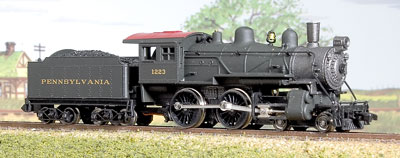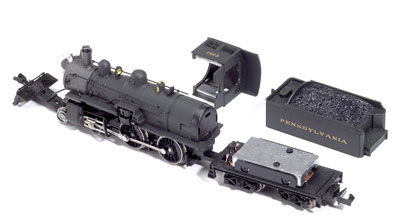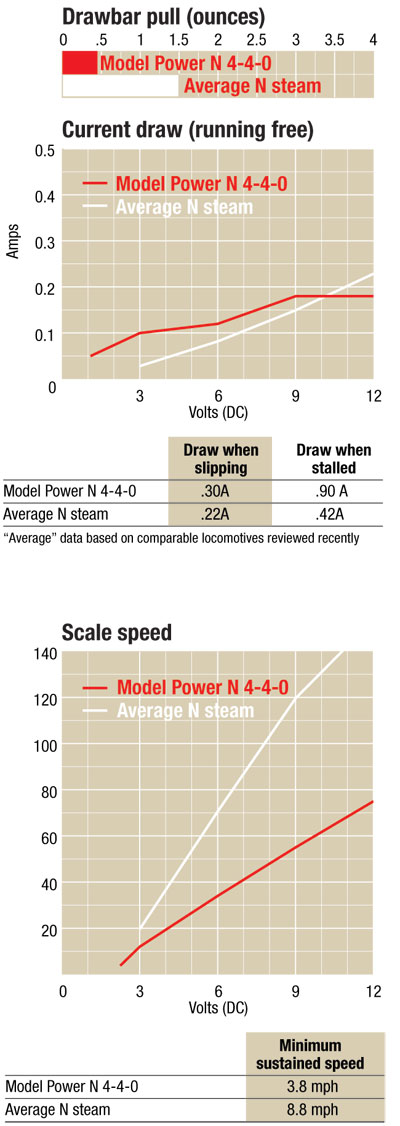Prototype background. Baldwin Locomotive Works introduced the first practical 4-4-0s in 1845, and for the next 50 years the wheel arrangement was so widespread that the locomotives were called “American Standards.”
They were simple, rugged machines, suitable for both passenger and freight service, and sure-footed on rough track. Many branch lines, survived into the early decades of the 20th century.
In testing the locomotive on a flat layout with 9¾” curves, I found that a six-car train was about the limit for this engine – not too much of a surprise when you remember that only two axles are doing the pulling.
The tender body lifts off easily, revealing a small weight on the tender frame and exposing the wiring from the tender-truck axle wipers (one tender truck draws current from one rail, the other truck draws from the other rail). There is enough space in the tender shell to install a small Digital Command Control decoder, although the job would require soldering.
The Rapido-style coupler and coupler box on the tender pops off, allowing installation of a Micro-Trains 1025 magnetic coupler.
Our sample was lettered for the Pennsylvania RR and numbered 1223, after a real PRR 4-4-0 preserved at the Railroad Museum of Pennsylvania in Strasburg, Pa. Although some of its dimensions are in the ballpark, the model doesn’t resemble the PRR prototype. It has a different cab and boiler contour, and it lacks the Pennsy’s distinctive Belpaire firebox.
Although it’s appearance is more generic than specific in some areas, Model Power’s 4-4-0 is a nice-running and nicely proportioned model of an iconic American steam locomotive.
Price: $145
Manufacturer
Model Power
180 Smith St.
Farmingdale, NY 11735
www.modelpower.com
Description
Die-cast metal and plastic ready-to-run locomotive
Road names
Atchison, Topeka & Santa Fe Ry.; Atlantic Coast Line Ry.; Baltimore & Ohio RR; Boston & Maine RR; Canadian National Ry.; Chicago, Burlington & Quincy RR; Chicago & North Western Ry.; Great Northern Ry.; Long Island RR; Louisville & Nashville RR; Minneapolis & St. Louis RR; New York Central RR; Northern Pacific Ry.; Pennsylvania RR, Southern Ry.; Southern Pacific RR; and a painted but not lettered version with extra user-installable details
Features
Die-cast metal boiler
Drawbar pull: .43 ounces (12 free-rolling cars on straight, level track)
Ten-wheel electrical pickup
Five-pole motor with flywheel
Light-emitting diode headlight
Locomotive and tender weight: 3.3 ounces
Minimum radius: 9¾”
NMRA RP-25 contour nickel-
silver wheels (in gauge)
Rapido-style coupler on tender, dummy front coupler
Road-specific details
Space for a Digital Command Control (DCC) decoder in tender shell
















